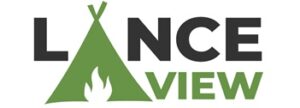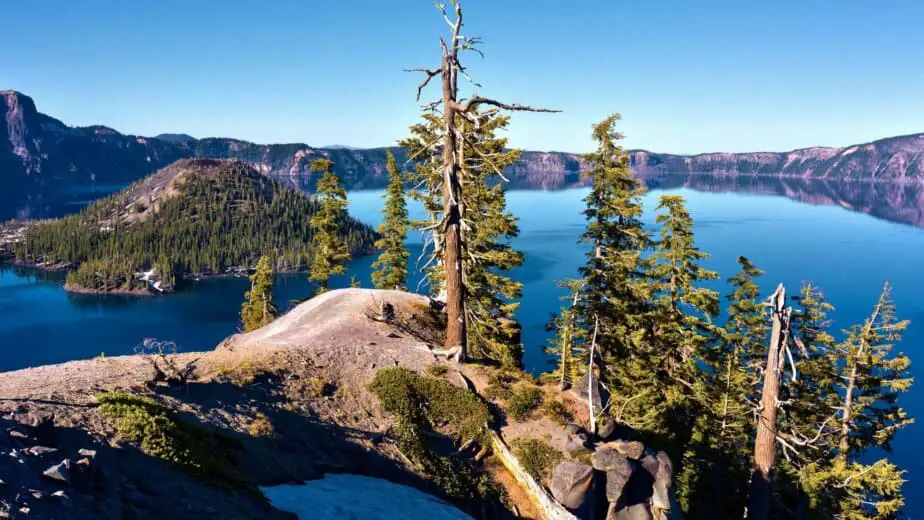Oregon offers so many unique options for lakeside camping that deciding where you want to pitch your tent, cast your fishing line, launch your canoe or kayak, swim, soak up the sun, or park your RV might seem challenging. Indeed, the state is rich in geographical features, with its wild coastline, rainforests, and old-growth forests to its high deserts and lava fields, so finding a lakeside campsite near any of these natural wonders won’t be a problem—although deciding on which lake you want to explore might be!
With so many unique lakeside camping options in the beautiful state of Oregon, we’ve done the groundwork for you and have come up with the top nine destinations that will surely offer a stellar lakeside camping experience. Read on to learn which lakes earned a spot on our list and why.
The heart of your campsite is your tent. No matter how comfortable your camp may be, if you do not have a good camping tent, your camping experience will not be as satisfactory as you want it to be. If you want to invest in a good tent, check out our article on the best tents for camping where we listed and reviewed the top tents available in the market today.
Crater Lake National Park
Listed as “one of the seven natural wonders”
A hike along the rim or driving Rim Drive offers the most spectacular views of Crater Lake. At the west end of the lake, surrounded by clear and clean, stunning blue water sits a volcanic cinder cone called Wizard Island, near the southern shore is Phantom Island’s rock pillar. The lake has no rivers leading in or out, and the water level is maintained by rain and snow.
There are two campgrounds in the park, Mazama Campsite and Lost Creek
- They are only open from June through September and require reservations.
- There are sites for both tents and RVs.
- The weather conditions can change rapidly, so make sure you are prepared with rain gear and additional layers for extra warmth.
These campgrounds are only two of the many lodging options in the area! Crater Lake is a popular destination not only for its unique beauty but also for the many activities you can partake in year-round, from hiking and camping to snowshoeing and skiing. It’s definitely not a wonder to miss.
Floras Lake State Park
For a lakeside camping experience on the road less traveled, Floras Lake State Park
Hiking, fishing, and boating are popular activities there, and the area is rich in flora and fauna. The lake is well known as an excellent spot for windsurfing and kiteboarding. If you are a beginner, lessons 

If you find you’re looking for a low-key and quiet lakeside camping experience, Floras Lake State Park is an excellent choice with many activities to pursue.
Cascade Lakes
On the east side of the Cascade Mountains, in central Oregon, is a chain of 12 lakes and two reservoirs. The possibility of camping right by one of these lakes is just a matter of making a choice!
Many of the Cascade Lakes are considered alpine due to their high altitude. This also makes the water cold but very clear as the cold water temperature slows moss and algae growth. The region is also unique for its volcanic landscape, beautiful forests, and stunning mountain views.
The possibilities to camp by one of these lakes are endless. There, you can find primitive camping sites, as well as campgrounds with amenities. Here is an interpretive guide
All Cascade Lakes can be viewed and accessed from the historical Cascade Lakes Scenic Byway
Depending on your desire to connect with nature, camping exists in multiple forms, namely backcountry and frontcountry camping. So what’s the difference between backcountry and frontcountry camping, and why pick one over the other? What gear should we consider for each type? Read our article to find out more.
Lake of the Woods
Lake of the Woods
A popular lodging choice there is this resort
If resorts aren’t your thing, the Aspen Point Campground 
Strawberry Lake
Strawberry Lake is a shallow lake located in Malheur National Forest
To learn more about camping at Strawberry Lake, click here
Paulina Lake
Paulina Lake is a crater lake located in Newberry National Volcanic Monument
Besides the possibilities to hike, swim, and boat, Paulina Lake offers hot springs and thermal vents on the northeast side, as well as Paulina Creek Falls
For detailed information about the area and camping options at Paulina Lake, check out this link
Billy Chinook Lake
Billy Chinook Lake is a canyon reservoir located in Cove Palisades State Park. The lake was created when the Round Butte Dam was built in 1964. The reservoir is gigantic, and the most fantastic feature is the 400-foot cliffs that surround the lake. These towering cliffs are a visual wonder and stunning backdrop to the canyon lake.
Cove Palisades State Park
The Cove Palisades State Park features:
- Tent and RV sites, as well as rustic cabins
- Boat launches, rentals (including houseboat rentals), and moorings
- Swimming sites
- A marina with a cafe and store for provisions
An impressive geological feature of this area is the cliffs surrounding Billy Chinook. These were created by Newberry Volcano when it erupted about a million years ago!
Wallowa Lake
Wallowa Lake is a ribbon lake nestled in Wallowa Mountains, in northeastern Oregon. A ribbon lake is a long and deep lake that rests in a trough formed by glacial activity. The picturesque Wallowa Lake and the surrounding area are often referred to as Oregon’s “Swiss Alps.” Breathtakingly beautiful and remote, lakeside camping there is a unique experience.
Wallowa Lake State Park 
- Year-round campsites
- A marina that is open seasonally
- Moorage slips
Wallowa Lake is a great place to relax, fish, hike, go boating, and swim. With so much to do right at your fingertips, there’s no reason to leave! But, if you want to further explore the area, you might want to stop by Hells Canyon Scenic Byway and the Wallowa Lake Tramway.
If you plan on going camping on a regular basis, it’s a good idea to invest in quality camping gear. There are tons of camping gear available in the market today but how do you know which ones are good? Check out our Camping Gear tab for our equipment reviews and recommendations.
Timothy Lake
With breathtaking views of the majestic Mount Hood, Timothy Lake has the distinction of being the largest body of water in Mount Hood National Forest. The lake is a reservoir created in 1956, when a dam was built to regulate downstream water flow. The lake is named after the Timothy grass that grew in the meadow that was flooded.
Here are a few of the campsites available at Timothy Lake:
- Meditation Point Campground
- Hoodview Campground
- North Arm Camping
- Gone Creek Campground
It’s worth noting that Timothy Lake allows motorized boats, which is not a common feature of most lakes in the Mount Hood National Forest.
Where Can You Camp for Free in Oregon?
Camping for free, or dispersed camping, is possible at some of the lakes mentioned above. These sites can usually be found last minute if that’s how you roll. However, you may need a permit for the spot and one for your vehicle—check out the requirements for where you plan on camping beforehand.
- Timothy Lake offers at least 40 dispersed campsites
that are available on a first-come, first-served basis and require self-registration and a permit for your vehicle.
- For dispersed sites around Crater Lake, here’s a helpful list
that also includes some useful tips about the area and dispersed camping in general.
- Mount Hood National Forest offers dispersed campsites. Here is an excellent resource
with locations and extra helpful information.
There are also plenty of dispersed campsites for RVs. This guide
As you can see, there are many options to camp at a low to no cost if you are exploring the great outdoors on a budget. All it takes is a bit of research to figure out where these sites are located.
Conclusion
Choosing a camping spot is the first box that you need to check when planning a camping trip. In the United States, there are beautiful camping spots everywhere, from national parks to private campgrounds. If you also want to enjoy some water fun during your trip, camping next to a lake will be perfect for you. When it comes to lakeside camping, Oregon is the place to be.
Camping next to a lake in the beautiful state of Oregon is just a matter of picking one of the many intriguing options. In this state, there’s a lake for everyone, regardless of one’s preferences. From primitive-style camping and rustic cabins to those RVing it, you’ll surely find the perfect lakeside camping spot!

